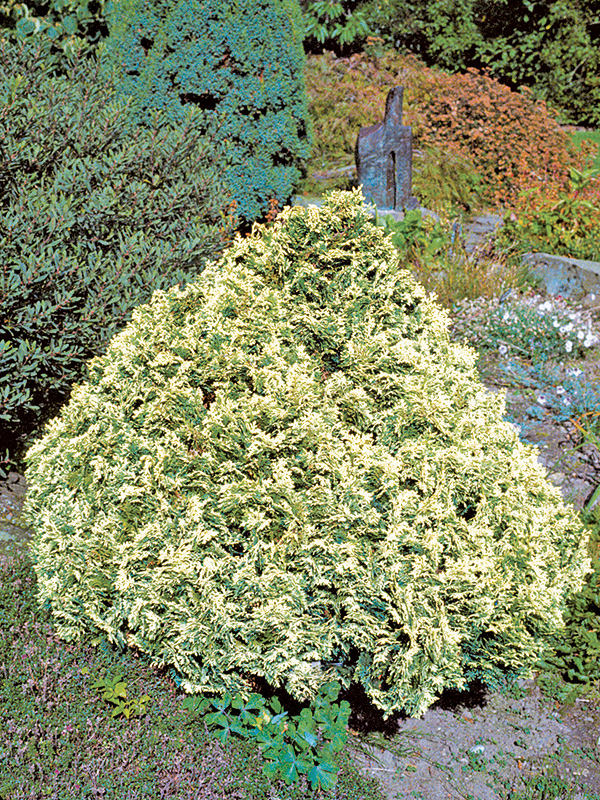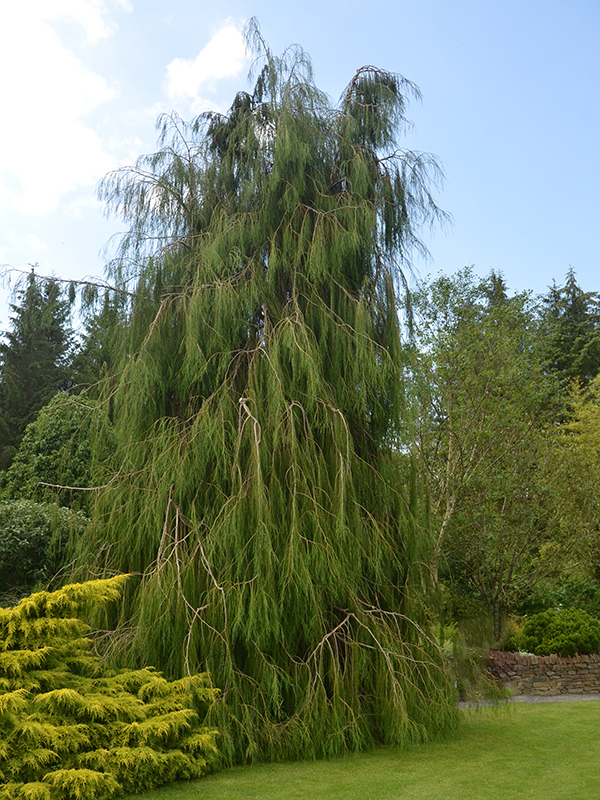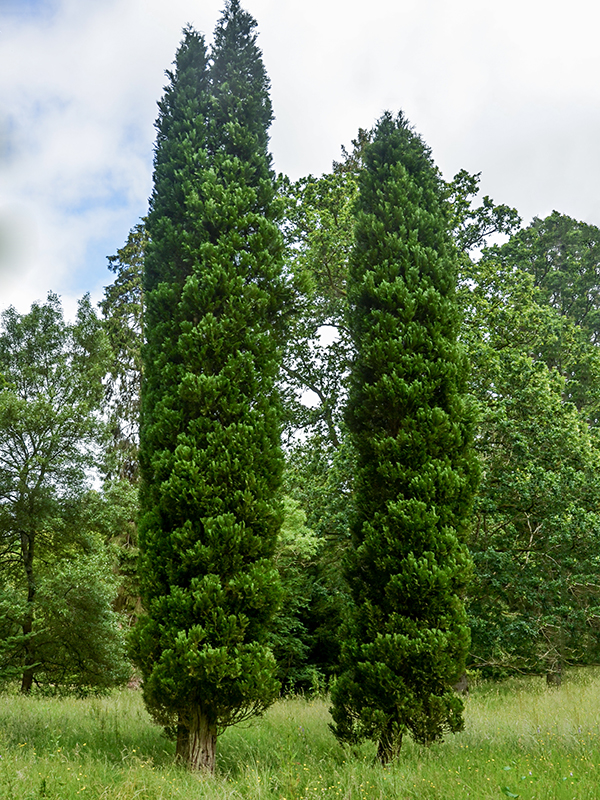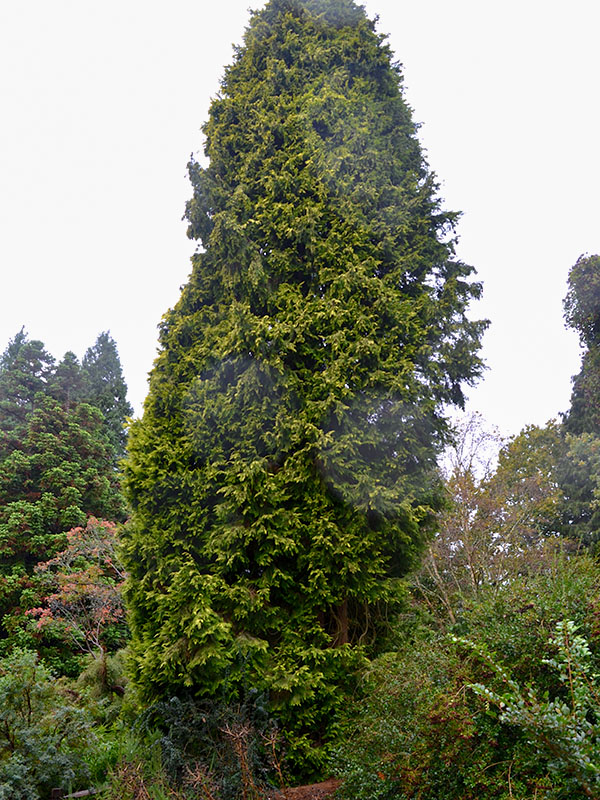
Woody > Chamaecyparis > Chamaecyparis lawsoniana > Chamaecyparis lawsoniana
Chamaecyparis lawsoniana
Lawson Falsecypress
Mike's
Opinion


"
Dominant specimen in nature with its size, has a soft look to it with small fruit that is closely scattered. There are a large number of cultivars that are extremely popular in the residential landscape. These cultivars offer a variety of shape, colour and size. Brown bark adds to the visual appeal of the tree. For best results grow in full sun. Moist areas will produce faster growth than dry soils; however, it is drought tolerant.
Michael Pascoe, NDP., ODH., CLT., MSc. (Plant Conservation)
"
| Family |
| Cupressaceae |
| Genus |
| Chamaecyparis |
| Species |
| lawsoniana |
| Category |
| Woody |
| Type |
| Tree (evergreen) |
| USDA Hardiness Zone |
| 5b - 7a |
| Canadian Hardiness Zone |
| 4b - 6b |
| RHS Hardiness Zone |
| H6 - H7 |
| Temperature (°C) |
| -32 - (-18) |
| Temperature (°F) |
| -25 - 10 |
| Height |
| 30 - 70 m |
| Spread |
| 5 - 10 m |
Photographs
Description and Growing Information
Flowering Period
| General Description |
| Large pyramidal tree, very dense, nearly vertical branching system that fattens out with the foliage. Small blue fruit that turns reddish brown in the autumn. The fruit does not hold much interest in the autumn. |
| Cultivation |
| Prefers well drained moist soil; full sun or partial shade; protection from cold winds; and lower night temperatures. If transplanted it is best balled and burlapped. Neutral to acidic soils are preferred. It will grow thin with poor colour in densely shaded areas. |
| Shape |
| Conical or columnar, branches grow nearly straight upwards. Very large dense tree. |
| Growth |
| Medium |
| ID Characteristic |
| Flattened bluish green foliage growing almost vertically upward, very dense yet soft looking tree. Foliage is accented by the rough reddish-brown bark. |
| Pests |
| Relatively pest and disease free, but a fungus called Phytophthora lateralis is rapidly killing these trees in the mountainous regions of Oregon and Northwest California. This fungus rots the roots and can completely kill these trees. |
| Habitat |
| Grows in a wide variety of soil types, usually with lots of other species growing with it. |
| Bark/Stem Description |
| Bark is reddish brown and is very rough. It can be up to 25 cm thick on older trees in the wild. Ridges run vertically up and down the tree and can be up to 10 cm deep on a big tree. |
| Flower/Leaf Bud Description |
| Small brown buds 2-4 mm in size slightly conical. Chamaecyparis will not bud on old wood. |
| Leaf Description |
| Leaves are scale like and are very tight together approximately 1 cm in length, almost flat. Glossy green in colour, and dense. From a distance the foliage has a soft look to it and can be very attractive. |
| Flower Description |
| There is a male and female flower that grow on the same branch, but different branchlets. Male flower is small round nearly perfect shape and is brown in colour. The female flower is bigger and resembles the shape of popcorn when it is fully opened. |
| Fruit Description |
| Small ovoid cone growing at the end of leaflets generally scattered. Each cone holds 3-4 seeds that are a disc shaped, this allows the seed to fall far from the tree. |
| Colour Description |
| Branching is red along with the bark on the trunk of the tree. Leaves are green and can turn brown in harsh winter weather or extreme cold. Fruit is brown. |
| Texture Description |
| The foliage on this tree has a soft texture, but is accented by the rough red bark. |
| Notable Specimens |
| Siskiyou National Forest, Oregon. 73 m high and 12 m wide, National Champion. |
| Propagation |
| Germination by seed is low due to poor viability; the seed is thin and weak. This tree can be propagated by cuttings taken in the autumn. Cuttings taken in October that are placed in a sand peat moss mix root very easily. |
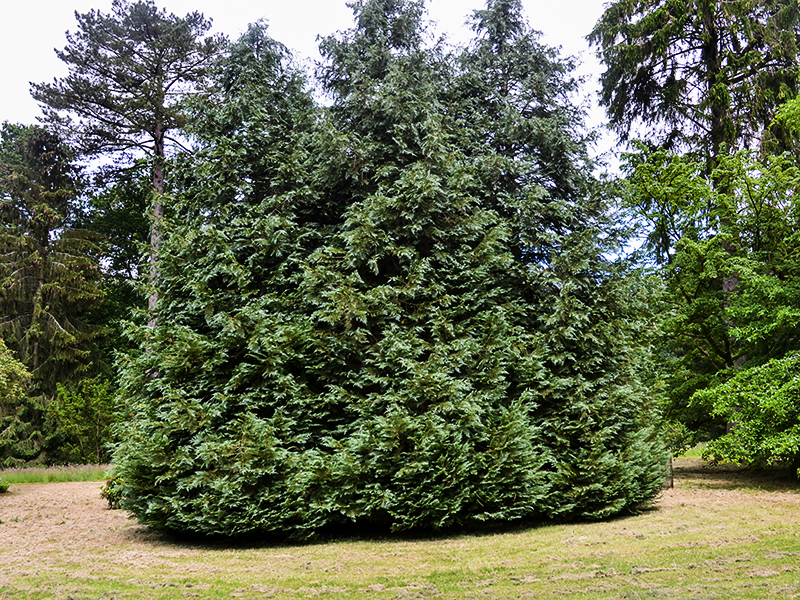
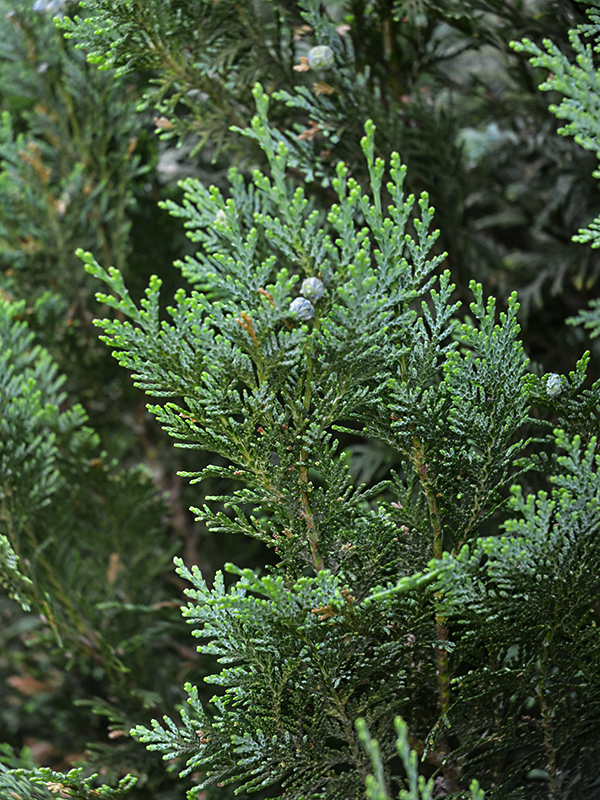
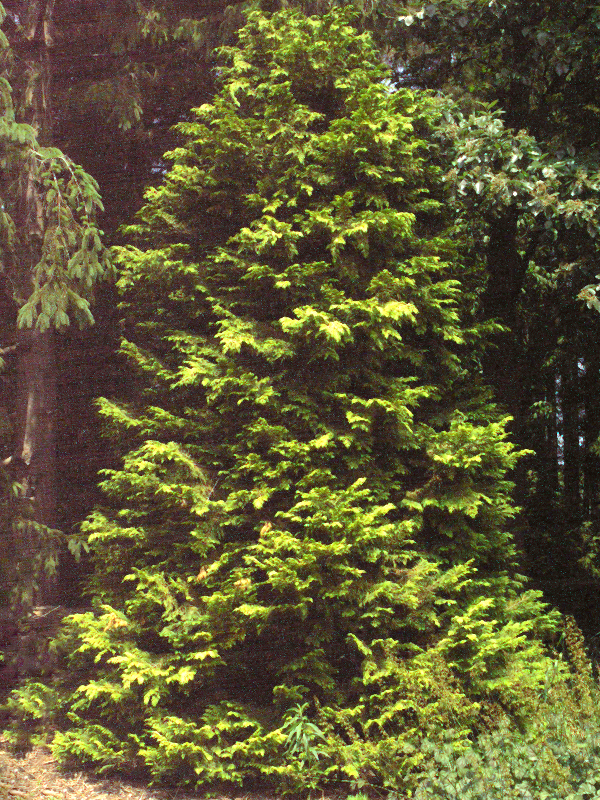
-1.jpg)
-1.jpg)
